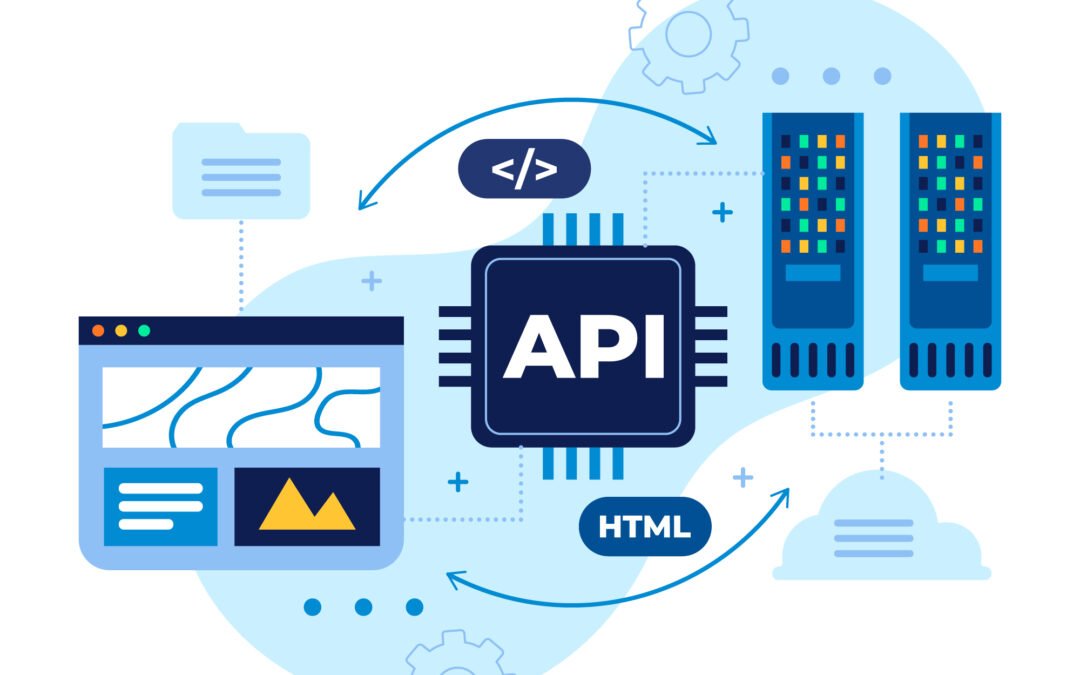
FTP, MongoDB, MySQL, PHP, PostgreSQL, programing, Scripting, Server
Introduction
In the vast world of web development, the server-side realm plays a pivotal role in determining how web applications run, interact, and serve users’ needs. One of the most popular server-side scripting languages is PHP, a powerful and flexible language that has powered many web pages for years. Let’s delve into the realm of server-side scripting with PHP.
What is Server-Side Scripting?
Server-side scripting refers to scripts running on the server rather than the user’s browser. Unlike client-side scripting, where the user’s web browser processes the hands (like JavaScript), server-side scripts are executed on the web server. The results are then sent to the user’s browser as plain HTML.
Why PHP for Server-Side Scripting?
- Open Source & Free: PHP is open-source, which means its source code is freely available. This has resulted in a vast community that constantly improves, updates, and provides support.
- Cross-Platform: PHP is cross-platform and can run on several web servers and platforms, such as Apache, IIS, and more.
- Integrated Database Support: PHP offers robust support for databases like MySQL, PostgreSQL, and MongoDB.
- Rich Libraries: PHP has a rich set of built-in libraries that assist developers in handling several tasks, including graphics, regular expressions, FTP, and email functionalities.
- Easy to Learn: With a syntax that borrows elements from C and Java, PHP is accessible and easy for many newcomers to grasp.
Critical Concepts in PHP Server-Side Scripting
- GET & POST Methods: These are two commonly used methods to send data to the server. While the GET method appends data to the URL, POST sends data without showing it in the URL, making it more secure for sensitive data.
- Sessions & Cookies: PHP allows developers to track user activity and retain user-specific information using sessions and cookies.
- File Handling: PHP provides robust tools for file creation, reading, writing, and closing operations.
- Form Handling & Validation: Using PHP, developers can retrieve form data and perform various validation checks before storing or using that data.
Examples of PHP Server-Side Scripting
A simple script to showcase a PHP server-side action is a welcome message based on the time of day:
<?php
$hour = date(“H”);
if ($hour < “12”) {
echo “Good morning!”;
} elseif ($hour < “18”) {
echo “Good afternoon!”;
} else {
echo “Good evening!”;
}
?>
The above script fetches the current hour from the server, and based on that, it decides which message to send back to the user’s browser.
Security Considerations
While PHP offers numerous advantages, it’s crucial to note that server-side scripting can expose vulnerabilities if not implemented correctly:
1. SQL Injection: Ensure all input from users interacting with your database is sanitized to prevent malicious code execution.
2. Cross-Site Scripting (XSS): Filter and sanitize user inputs to avoid inserting malicious scripts.
3. Password Protection: Always use encryption techniques and never store passwords in plain text.
Conclusion
PHP stands out as a versatile and efficient tool for server-side scripting. Its rich features and vast community support make it an ideal choice for web developers. However, as with any device, proper understanding and best practices ensure secure and optimal use. Whether you’re a seasoned developer or a beginner, PHP server-side scripting offers endless possibilities for creating dynamic and interactive web applications.

programing, Technology |
Introduction
TypeScript is a powerful programming language that offers several features to enhance productivity and maintainability in the development process. This blog post will explore five TypeScript tricks that every developer should know.
1. Optional Chaining
Optional chaining is a feature that allows you to safely access the properties of an object without worrying about potential null or undefined values. It is denoted by a question mark (?) placed before the dot operator.
For example, consider the following TypeScript code:
const user = { name: 'John', address: { city: 'New York' } };
If we want to access the city property of the address object, we can use optional chaining as follows:
const city = user?.address?.city;
This will prevent runtime errors if the address or city property is undefined or null.
2. Type Assertions
Type assertions allow you to specify a value type when TypeScript cannot infer it automatically. It is denoted by the angle bracket syntax or the ‘as’ keyword.
For example, consider the following TypeScript code:
const message = 'Hello World';
If we want to treat the message variable as a string, we can use type assertions as follows:
const length = (message as string).length;
This will ensure that TypeScript treats the message variable as a string and provides IntelliSense for string-specific methods like length.
3. Nullish Coalescing
Nullish coalescing is a feature that allows you to provide a default value when a variable is null or undefined. It is denoted by the double question mark (??) operator.
For example, consider the following TypeScript code:
const count = null ?? 0;
If the count variable is null or undefined, it will be assigned 0. Otherwise, it will retain its original value.
4. Mapped Types
Mapped types allow you to create new classes based on existing types by transforming each property. This can be useful for creating read-only or optional properties.
For example, consider the following TypeScript code:
interface User { name: string; age: number; }
If we want to create a read-only version of the User interface, we can use mapped types as follows:
type ReadOnlyUser = { readonly [K in keyof User]: User[K]; };
This will create a new style with all User interface properties marked as read-only.
5. Conditional Types
Conditional types allow you to create classes that depend on a condition. This can be useful for building flexible and reusable type definitions.
For example, consider the following TypeScript code:
type IsString = T extends string ? true : false;
If we want to check if a type is a string, we can use conditional types as follows:
type Result = IsString<'Hello World'>; // Result is true
This will be true if the provided type is a string and false otherwise.
Conclusion
These five TypeScript tricks can significantly enhance productivity and make your code more robust. By leveraging optional chaining, type assertions, bullish coalescing, mapped types, and conditional types, you can write cleaner and safer TypeScript code.

programing, Technology |
Navigating the Depths of Java Mastery
Java is one of the most widely used programming languages in the world. Its versatility and robustness make it an excellent choice for developing various applications, from web and mobile to desktop and enterprise systems. However, mastering Java is no easy feat. It requires a deep understanding of the language and its ecosystem.
If you are an aspiring Java developer looking to become an expert in the field, this roadmap will guide you through the key areas you must focus on. Whether you are a beginner taking your first steps in Java or an experienced developer looking to level up your skills, this roadmap will provide you with a clear path.
1. Fundamentals
Every Java expert starts with the fundamentals. You must understand the basics, such as variables, data types, control structures, and object-oriented programming concepts. Take your time to learn these concepts thoroughly, as they form the foundation of your Java knowledge.
2. Object-Oriented Programming
Java is an object-oriented programming language, so it is essential to have a deep understanding of object-oriented principles and design patterns. Learn about classes, objects, inheritance, polymorphism, and encapsulation. Familiarize yourself with common design patterns like the Singleton, Factory, and Observer.
3. Core Java APIs
Java has a vast library of APIs that provide ready-to-use functionality for various tasks. Familiarize yourself with the core Java APIs, such as the Collections Framework, I/O, Concurrency, and Networking. Mastering these APIs will enable you to solve complex problems efficiently.
4. Java Tools and Frameworks
To become an expert Java developer, you must be familiar with popular Java tools and frameworks. Learn how to use build tools like Maven or Gradle to manage your projects. Explore frameworks widely used in enterprise development like Spring, Hibernate, and JavaFX.
5. Performance Optimization
As a Java expert, you should know how to optimize the performance of your applications. Learn about profiling tools like JProfiler and VisualVM to identify bottlenecks in your code. Understand memory management and garbage collection to optimize memory usage.
6. Testing and Debugging
Testing and debugging are crucial skills for any developer. Learn how to write unit tests with tools like JUnit and Mockito. Familiarize yourself with debugging techniques using IDEs like IntelliJ or Eclipse. Testing and debugging your code effectively will save you time and effort in the long run.
7. Advanced Topics
Once you have mastered the fundamentals, it’s time to explore advanced Java topics. Dive deeper into multithreading, performance tuning, security, and distributed systems. Stay updated with the latest trends and technologies in the Java ecosystem.
By following this roadmap, you will be well on becoming an expert Java developer. Mastery takes time and practice, so be patient and never stop learning. Good luck on your Java journey!

Basics, Foundation, Learning, programing, REST API
Introduction: In modern web development, Application Programming Interfaces (APIs) have become essential for enabling seamless communication between different software systems. Representational State Transfer (REST) API, in particular, has emerged as a widely adopted architectural style for designing and implementing web services. This article aims to shed light on the fundamentals of REST API, its benefits, and its significance in today’s digital landscape.
Understanding REST API: REST API is an architectural style defining constraints for building networked systems. It is based on the principles of simplicity, scalability, and interoperability. REST leverages the existing infrastructure of the World Wide Web and uses a stateless, client-server communication model.
Critical Principles of REST API:
- Stateless Communication: Each request from a client to a server is independent and self-contained, containing all the necessary information to process the request. The server does not maintain any client-specific context between requests.
- Uniform Interface: REST API employs a standardized set of operations, such as HTTP methods (GET, POST, PUT, DELETE), to perform actions on resources. It also uses standard data formats for data exchange, like JSON or XML.
- Resource-Based: REST API treats every system component as a resource, identified by a unique Uniform Resource Identifier (URI). These resources can be accessed and manipulated using standard HTTP verbs.
- Hypermedia as the Engine of Application State (HATEOAS): REST API includes hyperlinks in the responses, enabling clients to dynamically navigate and discover available resources.
Benefits of REST API:
- Simplified Integration: REST API provides a straightforward and intuitive way to integrate different applications, platforms, and services. Its reliance on widely supported standards, such as HTTP and JSON, makes it accessible to developers across various programming languages.
- Scalability and Performance: REST’s stateless nature and utilization of the HTTP protocol’s caching capabilities contribute to improved scalability and performance. It allows for easy scaling of server resources and reduces the overhead associated with maintaining client session information.
- Platform Independence: REST API is platform-independent, meaning it can be consumed by any device or application that can request HTTP. This flexibility is crucial in today’s multi-device, multi-channel digital landscape.
- Encourages Loose Coupling: REST API promotes loose coupling between client and server components. Separating concerns allows both sides to evolve independently, enhancing system flexibility and maintainability.
- Wide Industry Adoption: REST API has gained significant popularity due to its simplicity, making it the de facto standard for building web services. Its extensive use in major cloud platforms and numerous open-source frameworks further solidifies its importance.
Conclusion: REST API has revolutionized how applications communicate, providing a powerful and flexible approach for integrating systems in a standardized manner. With its emphasis on simplicity, scalability, and platform independence, REST has become the go-to choice for developers and organizations seeking efficient and reliable interconnectivity. Understanding the principles and benefits of REST API opens up a world of possibilities for creating interconnected digital ecosystems and driving innovation in the rapidly evolving technology landscape.

programing, Web Design
JavaScript is a powerful programming language that is crucial in modern website design. It helps developers create dynamic and interactive web pages that engage users and provide an enhanced browsing experience. With its wide range of capabilities, JavaScript has become an essential tool for web designers across the globe.
One of the key advantages of using JavaScript in website designing is its ability to add interactivity. By incorporating JavaScript code into web pages, designers can create interactive elements such as image sliders, drop-down menus, and forms that respond to user actions. This interactivity improves user engagement and makes the website more user-friendly and intuitive.
Another important aspect of JavaScript in website designing is its capability to manipulate the Document Object Model (DOM). The DOM is a programming interface that represents the structure of an HTML document. JavaScript can modify the DOM elements, such as adding or removing content, changing styles, or animating elements. This allows designers to dynamically update the website’s content and appearance without reloading the entire page.
JavaScript also enables designers to implement client-side form validation. With JavaScript, designers can validate user input in real-time without server-side validation. This helps provide users instant feedback, preventing them from submitting incorrect or incomplete data. Additionally, JavaScript can enhance the user experience by displaying error messages or highlighting wrong fields, further improving the website’s usability.
Furthermore, JavaScript offers powerful APIs (Application Programming Interfaces) that allow designers to integrate various third-party services and functionalities into their websites. For example, designers can use JavaScript APIs to integrate social media sharing buttons, embed maps, create charts, or implement video players. These APIs provide a seamless integration of external services, enhancing the website’s functionality and enriching the user experience.
JavaScript also plays a significant role in optimizing website performance. By utilizing JavaScript techniques such as asynchronous loading, lazy loading, and minification, designers can reduce the website’s loading time, resulting in faster and more efficient browsing. JavaScript frameworks like React and AngularJS enhance website performance by providing efficient rendering and state management capabilities.
In conclusion, JavaScript is an indispensable tool for website design. Its ability to add interactivity, manipulate the DOM, validate form inputs, integrate third-party services, and optimize performance makes it a crucial component of modern web design. By leveraging the power of JavaScript, designers can create dynamic, user-friendly, and visually appealing websites that leave a lasting impression on visitors.

Algorithm, programing |
Floyd’s Algorithm: An Introduction and Overview
Floyd’s Algorithm, often called Floyd-Warshall Algorithm, is a classic computer science algorithm used to find the shortest paths between all pairs of vertices in a weighted, directed graph. Devised by Robert Floyd in 1962, this algorithm falls under the category of dynamic programming.
1. Basics of Floyd’s Algorithm:
The main principle behind the Floyd-Warshall algorithm is fairly simple: For each pair of nodes, it repeatedly checks if a shorter path exists through an intermediate node.
Given:
– A graph with `n` vertices.
– A matrix `D` of size `n x n` where `D[i][j]` is the shortest distance from vertex `i` to vertex `j`.
The algorithm uses a triple nested loop, and for each combination of vertices `i`, `j`, and `k`, it checks if the path from `i` to `j` through `k` is shorter than the current known path from `i` to `j`. If so, it updates the value of `D[i][j]`.
2. Pseudocode of Floyd’s Algorithm:
function floydsAlgorithm(D):
n = number of vertices in D
for k from 1 to n:
for i from 1 to n:
for j from 1 to n:
D[i][j] = min(D[i][j], D[i][k] + D[k][j])
3. Applications and Use Cases:
Floyd’s Algorithm finds a wide range of applications, including:
– Road networks: Determining the shortest path between any two cities.
– Telecommunication networks: Finding the least costly path for data transmission.
– Flight scheduling: To determine the shortest (or cheapest) route between two airports, possibly with layovers.
– Game development: For pathfinding and AI decision-making.
4. Advantages:
1. Simplicity: The algorithm is straightforward and can be easily implemented.
2. All-pair shortest paths: Unlike Dijkstra’s or Bellman-Ford, which find the shortest path from a single source, Floyd-Warshall finds the shortest paths between all pairs.
5. Limitations:
1. Time Complexity: With a time complexity of O(n3), it may not be the best choice for graphs with many nodes.
2. Space Complexity: Requires O(n2) space to store the distances between vertices.
6. Variations and Enhancements:
The basic Floyd-Warshall algorithm can be enhanced to reconstruct the actual path (sequence of vertices) between any two vertices, not just the shortest path’s length. This involves maintaining a predecessor matrix alongside the distance matrix.
Conclusion:
While not always the most efficient for large-scale problems, Floyd’s Algorithm remains an invaluable tool in the repertoire of computer scientists and engineers. Its simplicity, coupled with the ability to handle negative edge weights (as long as there are no negative cycles), ensures its continued relevance in the field of graph theory and network optimization.






